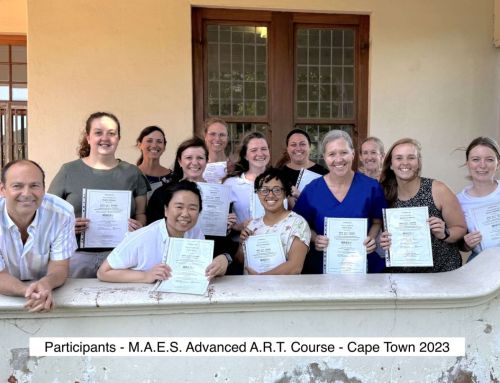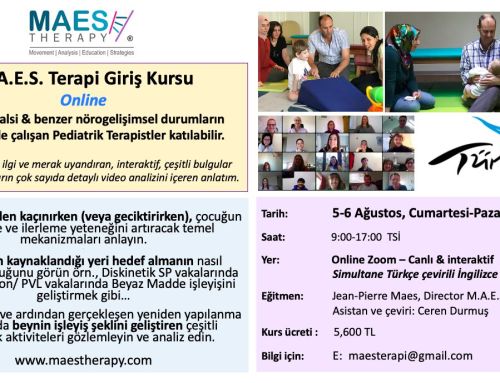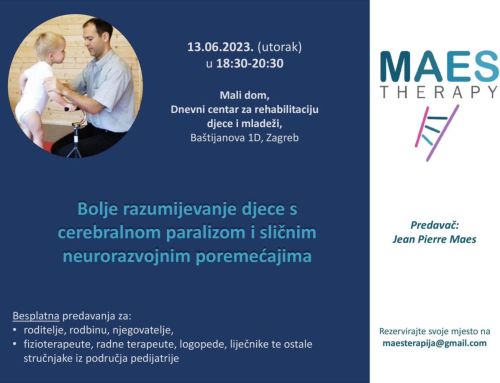Understanding Cerebral Palsy
Cerebral palsy also referred to as CP, is reputed to affect somewhere around one out of every 320 children. CP is an umbrella term used to describe a group of lifelong conditions that affect movement and coordination, caused by a problem with the brain that occurs before, during or soon after birth.
It can cause difficulties with acquisition of typical milestones; gross motor function, fine motor function, altered gait pattern, sensory processing, speech and language, swallowing and feeding, breathing, motor planning, play, interaction and learning, muscle strength and flexibility.
Children with Cerebral Palsy develop and learn differently as they over rely on strengths to compensate for the weaknesses resulting from the brain injury. This can result in a variety of problems; high muscle tone; low muscle tone; moving using mass patterns of movement; poor balance reactions.
Causes of Cerebral Palsy
Cerebral Palsy generally occurs if a baby’s brain hasn’t developed typically whilst in the womb, or if it is damaged during or soon after birth.
This can be a result of:
– bleeding in the brain (brain bleed) or reduced blood and oxygen supply to the brain (hypoxia).
– an infection caught by mother during pregnancy (cytomegalovirus; rubella; toxoplasmosis)
– the brain temporally not getting enough oxygen (intrapartum asphyxiation) during a difficult birth (Hypoxic-Ischemic Encephalopathy (HIE). HIE is one of most common causes of CP.
– Meningitis
– a serious head injury.
Types of Cerebral Palsy
The timing and type of the insult to the brain that results in CP will often determine the area of the brain that is affected. (An ‘insult’ to the brain is a trauma that can lead to temporary or permanent injury, which may cause impairment in the function of the brain).
The White Matter is the most common area affected when injury is sustained to the pre-term brain. (White matter refers to areas of the central nervous system (CNS).
- Premature birth is a risk factor for cerebral palsy.
- Periventricular Leukomalacia (PVL) observed in some preterm infants affects the way the white matter processes signals from the body and to the rest of the brain – tending to result in sensory processing difficulties; internal regulation difficulties.
- Physical symptoms often described as a result of white matter damage include:
- Spasticity
- Poor dissociation of legs (scissoring)
- Use of mass patterns
- Poor repertoire of movement in the trunk
- Over reliance of extension in the trunk
- Other symptoms include:
- Severe anxiety associated with movement or new situations or environments (which can lead to autonomic nervous system responses (sweating, increased heart rate…)
- Some define Cerebral Palsy that results in “spasticity” in the legs and/ or arms as Diplegic Cerebral Palsy or Quadriplegic Cerebral Palsy.
- Lesions in the white matter can significantly disrupt a child’s development and learning due to difficulties in making sense of the world around them; orientating themselves in time and space; developing body and spatial awareness.
- This can disrupt learning and affect child’s ability to move freely to roll, sit, walk, their breathing, crossing the midline, visual difficulties (Cerebral Visual Impairment (CVI); maintaining internal regulation, emotional stability, sleeping, eating, making eye contact and other social interactions.
- When Cerebral Palsy is the result of birth asphyxia (lack of oxygen to brain during birth) – which is rarer – the infant can suffer from Neonatal encephalopathy (NE), also known as neonatal hypoxic-ischemic encephalopathy(neonatalHIE or NHIE)
- Symptoms of this include seizures, irritability, jitteriness, feeding and respiratory problems, lethargy and coma depending upon severity.
- Lesions in the Basal Ganglia and Thalamus can significantly disrupt learning and a child’s freedom to explore and experiment with movement in early stages of development.
- Symptoms of these difficulties which may include:
- Disorganised movements sometimes appearing “involuntary”
- Getting stuck in patterns of movement “dystonic posturing”
- Fluctuations of muscle tone
- Repetitive movement
- Moving in mass patterns
- Avoiding crossing the midline
- Behavioural difficulties
- Repetition of behaviours
- Symptoms of these difficulties which may include:
- Some define CP classified by symptoms such as these as Dyskinetic Cerebral Palsy with subcategories within this describing the way a child moves (Choreoathetosis; Dystonia; Pure Athetosis).
- When a child has difficulties acting upon information, the process in the brain (feedback feed-forward loop), their learning and development is affected. This again results in limited movement repertoire, reduced exploration and experimentation and is seen and recognised commonly by the following symptoms:
- Tremor
- Low muscle tone
- Problems with balance
These symptoms can be a result of a lesion in the Cerebellum and are sometimes classified as Ataxic Cerebral Palsy.
All different types of Cerebral Palsy affect the way a child learns and develops, this can result in physical signs and symptoms as well as behavioural, emotional and cognitive. Common among all different ‘types’ is a reduced variety and repertoire – be that in how a child moves, how they interact, engage, learn cope or behave. This ultimately leads to a plateau in development and risk of developing contractures and deformities, social isolation and reduced ability to participation and function in activities of daily living (ADL’s) as a child, adolescent and adult.
Cerebral Palsy and associated conditions
Studies have revealed there is a significant overlap between the diagnosis of autism, epilepsy, ADHD and cerebral palsy in children. These Neurodevelopmental Disorders or conditions, all describe groups of symptoms associated with children whose brain hasn’t developed normally or where the brain has sustained damage prenatally, during or soon after birth.
Treating Cerebral Palsy
Therapy is the most commonly recommended intervention for Cerebral Palsy:
- Physiotherapy, Occupational Therapy and Speech & Language Therapy (PT, OT, SLT).
Traditionally these have focussed on physical symptoms and based interventions upon an understanding of what development looks like for an infant with a typical brain (typical development). These traditional treatment approaches include:
- “normalising muscle tone” facilitating more typical motor patterns.
- Repetitively practicing functional activities (gait rehabilitation; treadmill training) or goal orientated tasks.
- Reduce the impact a child’s impairment has on their function, participation and activities of daily living.
- Mobilising and stretching to maintain range in muscles and joints that are at risk of becoming tight and not developing well due to the child’s limited movement repertoire.
- Supporting the child to experience more typical movement and play
- Strengthening muscles (Progressive Resistance Exercise/ Strength Training) that have become weak as a result of child not recruiting them in the attempt to encourage the child to use them.
- Providing orthotics to prevent contracture and deformities (gaiters, stability wraps, braces).
The pioneering M.A.E.S. Therapy Approach for treating babies and children with neurodevelopmental conditions, believes that the most important point to consider is that the child was born with a normal body and it’s about the child’s brain and the way the child’s brain (which has been affected by a lesion) learns to direct the body.
The physical aspects are important, but secondary, but unfortunately this is where many Therapists (PT,OT,SLT) without deep knowledge of CP typically pay the most attention, effectively working to ‘treat’ the symptoms instead of the cause.
The physical aspects should be addressed, but are secondary to helping the child’s brain learn to ‘unlearn’/reduce the atypical movements the child’s brain has already chosen and through highly skilled handling physiotherapy using the advanced M.A.E.S. Therapy Approach, Therapists help the child to learn alternative, more ‘typical’ movements.
By working on the skills and components the child is missing, M.A.E.S. Trained Therapists can help the child gain the basis for more typical coordination.
M.A.E.S. Therapy Approach
M.A.E.S. Therapy (Movement Analysis, Education Strategies) is a UK based international specialised treatment approach. It is available for babies and children of all ages where neurodevelopmental conditions such as Cerebral Palsy (CP), prevent them from following a typical course of development.
M.A.E.S. Therapy looks at what is influencing a child’s movements. This includes looking from the child’s perspective and how they’ve learnt to understand, experience and interact with the world around them. Therapists are specially trained to deeply analyse the child’s movements and identify what may be influencing their development now and in their future.
Therapy utilises specific, highly skilled handling to guide movement, cognition and play in order to take the child on a path of learning new skills and maximising their potential which they wouldn’t do without therapeutic intervention.
M.A.E.S. Therapy aims at providing the child with a path of experience and development that doesn’t focus on the short-term achievement of tasks or working through sets of developmental milestones (which are based upon a ‘typical’ child). Instead, M.A.E.S. Therapy works to create the foundation to reduce the ‘atypical’ development in the long term and open the possibilities for different and better outcomes.
Addressing the needs of the individual
Through established and emergent therapies along with modern technology, care providers and clinicians are able to do much to improve the quality of life of those who suffer from CP. Some common views shared by those who provide such care is that each person is an individual and that treatments should be holistically based, taking into consideration a person’s emotional, physical and mental needs.





